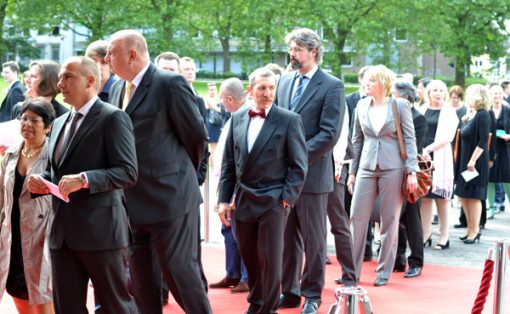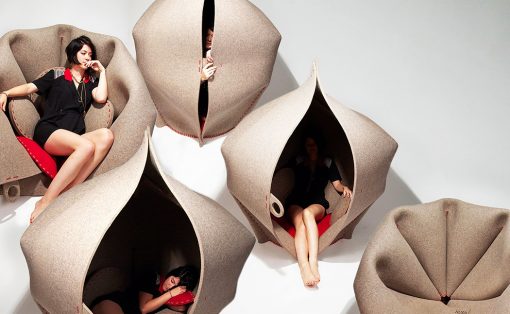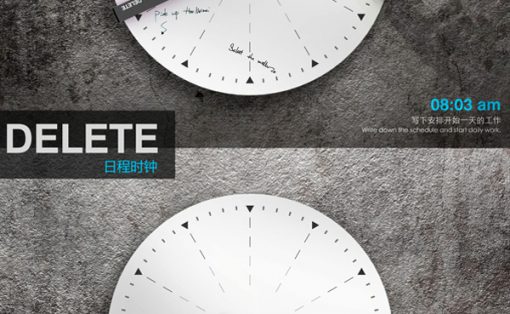
The moment I approached the 2025 Audi Q5 in Aspen, Colorado, the vehicle’s design language immediately communicated a fundamental shift in SUV thinking. This represents a complete rethinking of how form and function integrate in contemporary SUV design, addressing aesthetic evolution and practical demands through pure design intelligence. The new Premium Platform Combustion chassis provides the foundation for this change, creating proportions that feel familiar and fresh.
The SUV Proportion Evolution
Traditional SUV design has long struggled with the tension between commanding presence and aerodynamic efficiency. The 2025 Q5 addresses this fundamental conflict through what Audi calls “dynamic proportions,” and after driving it 130 miles through Colorado’s challenging mountain terrain, I can confirm this represents genuine design innovation rather than marketing terminology. The Q5’s surface development reflects advanced understanding of how light and shadow create visual interest across varying viewing angles. The reduction of unnecessary body lines creates clean surfaces that allow the fundamental form to communicate strength and purpose without relying on aggressive styling clichés that quickly become dated.

Pulling away from our starting point, the Q5’s 268 horsepower turbocharged four cylinder delivered immediate throttle response that felt more refined than the previous generation. The power delivery builds smoothly from 1,500 rpm, providing the kind of linear acceleration that makes mountain driving confidence inspiring rather than stressful. During acceleration testing on a straight mountain section, the Q5 reached 60 mph in six seconds, rivaling some sports cars despite its SUV proportions. The engine note remains subdued during normal driving but develops a more purposeful sound when pushed harder through the mountain passes. During our initial climb out of the valley, the turbocharger spooled with minimal lag, eliminating the hesitation that can make mountain driving frustrating when you need power immediately for passing or merging.

The SQ5’s 362 horsepower V6 changes the driving experience. Stabbing the throttle produces an immediate surge of torque that pins you back in the seat, with the engine pulling strongly all the way to redline. The sound is intoxicating without being obnoxious, creating the soundtrack for aggressive mountain driving. The additional 67 horsepower over the standard Q5 makes itself known immediately, especially when climbing steep grades where the extra power eliminates any sense of strain. The V6’s broad torque curve provides flexibility during technical driving situations, delivering strong acceleration from any rpm without requiring downshifts to access the power band.

The seven speed S tronic dual clutch transmission deserves special mention for its intelligence during mountain driving. In automatic mode, it holds gears longer when climbing and downshifts aggressively when descending, using engine braking to maintain control without overheating the brakes. Manual mode via the paddle shifters provides instant response, with shifts occurring in milliseconds rather than the sluggish responses typical of torque converter automatics. The programming prioritizes performance and control over fuel economy, which proves ideal for mountain driving conditions where maintaining momentum and control takes precedence over efficiency.

The wheelbase extension creates interior space gains while the overall length increase remains modest, demonstrating how careful proportion adjustments can deliver practical benefits without disrupting visual harmony. This represents the kind of design intelligence that separates genuine innovation from superficial styling exercises.

Performance Dynamics: Where Design Meets Reality
The handling characteristics reinforce this design philosophy through precise steering that communicates road surface changes without becoming twitchy or nervous. The Q5 feels planted and secure through mountain curves, with body roll kept well in check despite the higher center of gravity. The steering weight builds naturally as speeds increase, providing the kind of feedback that inspires confidence during spirited driving. During our most challenging sections through winding mountain passes, the steering remained communicative without becoming nervous, allowing precise placement through corners while maintaining the comfort expected in this segment.

Pushing the Q5 harder through a series of tight switchbacks revealed composure for an SUV. The chassis maintains balance, with the quattro all wheel drive system distributing power to maintain traction without intrusive electronic interventions. The vehicle rotates naturally through corners, responding predictably to steering inputs while maintaining the stability that SUV buyers expect. During one particularly demanding section with decreasing radius turns, the Q5 demonstrated poise, allowing aggressive cornering speeds while maintaining complete control.

The SQ5’s sport adaptive air suspension changes the handling equation. In Dynamic mode, the suspension firms up dramatically, reducing body roll to sports car levels while maintaining enough compliance to handle rough mountain roads. The difference between Comfort and Dynamic modes is substantial, providing two different vehicles in one package. Switching between modes during our drive revealed how dramatically the character changes, from comfortable cruiser to focused performance machine with the press of a button.

Braking performance proved strong throughout our demanding mountain drive, with the standard brakes on the Q5 providing consistent stopping power with pedal feel and modulation. During repeated hard stops on steep descents, the brakes showed no signs of fade or degradation. The SQ5’s larger brakes offer even more capability, with the kind of stopping power that allows aggressive driving with complete confidence. The brake pedal feel remains firm and progressive throughout, allowing precise control during technical driving situations.



The rear design exemplifies this philosophy through a clean approach that eliminates visual clutter. From the rear window to the lower edge of the three dimensional light strip, a smooth surface creates visual width while the area between the light strip and bumper maintains restraint. The functional tailpipes exit on sides, with SQ5 models featuring iconic quad tailpipes that receive a sharpened design treatment.

During our late afternoon arrival in Aspen, these design elements created a refined presence that communicated capability and refinement. The clean surfaces and purposeful details projected confidence without the ostentation that can alienate in exclusive resort environments.
Interior Architecture: The Horizontal Philosophy
The interior design represents the most significant departure from traditional SUV thinking. The horizontal dashboard structure creates visual width while the high quality materials extend across the interior width, establishing a sense of spaciousness that exceeds the vehicle’s dimensions.

The clear design approach eliminates visual complexity while maintaining functional accessibility. Every control placement reflects careful consideration of human ergonomics and usage patterns, creating an environment that enhances rather than complicates the driving experience. The integration of technology feels organic rather than imposed, suggesting genuine understanding of how humans interact with automotive systems.





During our challenging mountain route from Crested Butte through Buena Vista to Aspen, this interior architecture proved its worth through intuitive operation that required minimal learning curve. The horizontal emphasis created a sense of stability and control that enhanced confidence during demanding driving situations.
The fully adjustable rear seat represents thinking about passenger and cargo flexibility. The bench can slide back and forth while tilting to increase either cargo volume or rear passenger space as required. This mechanical solution addresses real world usage patterns through design intelligence rather than electronic complexity.
Lighting as Design Communication
The advanced lighting technology represents a fundamental shift in how automotive illumination functions as design language. The Matrix Design LED headlights offer up to eight digital light signatures in the redesigned daytime running lights, allowing individual expression while maintaining Audi’s design DNA.

The second generation digital OLED taillights feature three dimensional design that brings physical and digital worlds together. The light strip spans the vehicle width, creating visual presence that enhances safety while communicating design sophistication. The available OLED technology provides customization options that allow owners to express individual preferences within established brand parameters.


The projection light in the spoiler above the rear window on Q5 Sportback and SQ5 models delivers increased visibility by projecting into the upper rear window area, enlarging the Center High Mount Stop Light area. This functional innovation demonstrates how safety requirements can drive aesthetic advancement rather than compromising design integrity.

During our drive through varying light conditions, from Crested Butte’s mountain shadows to Aspen’s evening illumination, these lighting elements enhanced visibility and visual appeal. The Coming Home and Leaving Home lighting sequences changed vehicle approach and departure into kinetic experiences that communicated technological sophistication.
Material Innovation and Color Strategy
The color palette reflects careful consideration of contemporary preferences while maintaining timeless appeal. The Q5 lineup offers ten exterior colors including new Tambora Gray metallic, while exclusive options like Ultra Blue metallic and Daytona Gray pearl effect are available for Q5 Sportback and S models.

These color choices reflect different personality expressions while maintaining cohesive brand identity. The exclusive colors for specific variants create hierarchy within the lineup while allowing individual expression. The interior materials and color combinations create environments that feel contemporary and enduring, avoiding trends that quickly become dated.

The wheel designs demonstrate how functional requirements can drive aesthetic innovation. The progression from 18 inch to 21 inch designs maintains proportional relationships while adding visual drama appropriate to performance variants. The SQ5’s available wheel options include designs that emphasize the performance character while maintaining the refinement expected in upscale SUV segments.
Technology Integration Philosophy
The technology integration reflects mature understanding of how digital systems should enhance rather than dominate the user experience. The available features operate transparently, supporting the driving experience without requiring constant attention or management.

The wireless charging system provides 15 watts of power while incorporating cooling to prevent device overheating during extended use. The USB C ports deliver considerable power with front ports supporting up to 60 watts and rear ports providing up to 200 watts combined, ensuring that multiple devices remain powered throughout extended journeys.




The fully adjustable rear seat system demonstrates mechanical innovation that addresses real world usage patterns. The ability to slide and tilt the rear bench provides cargo and passenger flexibility that electronic systems cannot match, representing problem solving through design intelligence.
Pricing Reflects Design Value
The design innovation comes at price points that reflect genuine value rather than exclusivity positioning. The Q5 starts at $52,200, providing access to the complete design package including the Digital Stage OLED system, Matrix Design LED headlights, and quattro all wheel drive with the 268 horsepower turbocharged four cylinder engine. The Q5 Premium Plus at $56,700 adds sport seats, 19 inch wheels, and enhanced technology features, while the Q5 Prestige at $60,600 includes the adaptive air suspension, Bang & Olufsen sound system, and advanced lighting technology.

The Q5 Sportback commands a $3,700 premium over the standard SUV, starting at $55,900 for the trim. This pricing reflects the additional engineering required for the coupe like roofline and specialized manufacturing processes. The Sportback Premium Plus at $58,800 and Prestige at $62,700 maintain the same equipment progression as the standard Q5 while adding the distinctive styling that appeals to buyers seeking a more expressive design statement.

SQ5 models begin with the trim at $64,800, featuring the 362 horsepower V6 engine, sport adaptive air suspension, sport rear differential, and 20 inch wheels as standard equipment. The SQ5 Premium Plus at $68,300 adds sport plus seats, advanced driver assistance features, and enhanced interior appointments. The SQ5 Prestige at $71,200 includes the complete technology package with head up display, 360 degree cameras, and the full suite of convenience features.
The SQ5 Sportback represents the range topping model, starting at $67,600 for trim and reaching $73,000 for the Prestige variant. This pricing positions the SQ5 Sportback as a direct competitor to performance SUVs from BMW and Mercedes Benz while offering the distinctive liftback profile that sets it apart in the segment.

For mountain enthusiasts who need to transport gear while maintaining an appropriate image in upscale destinations like Aspen, this pricing structure provides clear value propositions. The Q5 offers an accessible entry point into Audi’s advanced technology and quattro capability, while the SQ5 Prestige provides the performance and features that justify the investment for buyers who prioritize driving dynamics and comprehensive equipment. All pricing excludes the $1,295 destination charge, taxes, title, and dealer fees.
Design Legacy and Future Direction
The 2025 Q5 represents evolutionary rather than transformative design thinking, building on established Audi design principles while addressing contemporary functional requirements. The approach suggests mature understanding of how form and function must integrate to create vehicles that serve diverse user needs without compromise. 
This design philosophy demonstrates that careful development can solve complex problems while creating objects of genuine beauty. In an era of increasing automotive complexity, the Q5 represents a refreshing return to fundamental design principles applied with contemporary sophistication and technological capability.

The result is SUV design that enhances rather than complicates the user experience while maintaining the visual appeal that drives initial purchase decisions. The 2025 Q5 family proves that intelligent design can address practical requirements while creating vehicles that satisfy rational and emotional purchase motivations.






